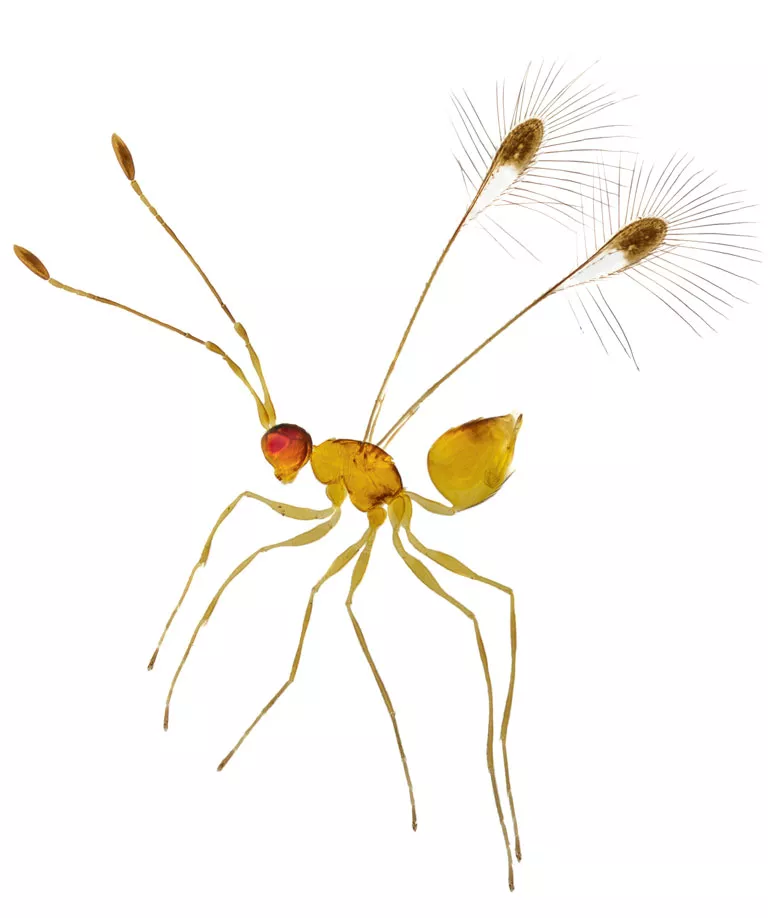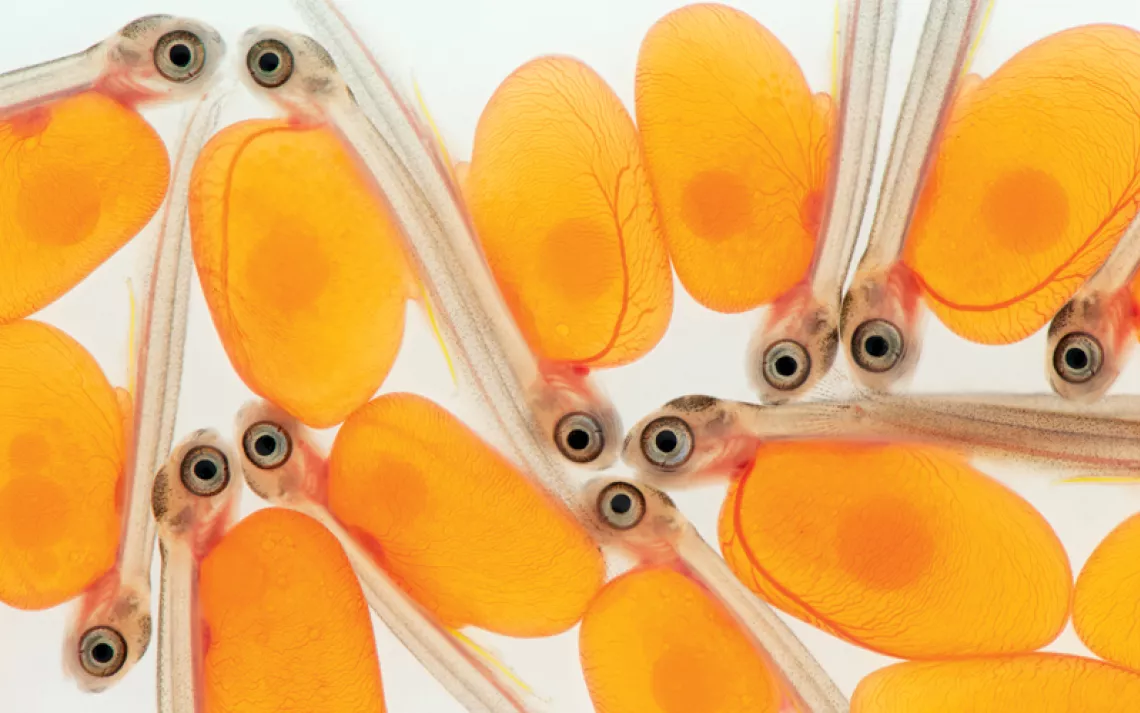The World's Tiniest Insect Fights Off Crop Pests and Inspires More Efficient Computers
The fairy wasp exists on almost every continent, yet almost no one has seen one

Alex Hyde/NPL/Minden Pictures
The fairy wasp is camp. Its wings are two vertical spoons tasseled like the sleeves of a suede rodeo jacket. Despite the wasp's showiness—and its presence on every continent except Antarctica—very few people have seen one in real life. That's because it's tiny. Unfathomably so.
The smallest insect in the world is a blind, wingless fairy wasp called Dicopomorpha echmepterygis. At 0.139 millimeters, its total body length is the width of a human hair. The smallest winged insect in the world is also a fairy wasp: Kikiki huna (Hawaiian for "tiny bit"), at 0.16 millimeters long. Other fairy wasp species—the jumbo ones—measure the same as a single-celled amoeba, all of two micrometers.

Unlike amoebas, however, fairy wasps contain much of the same bodily equipment as humans: digestive tracts, respiratory and circulatory systems, and a central nervous system. They also have genetic sexes with different physiologies and reproductive processes. Their bodies are a master class in scaling down without losing complexity.
But fairy wasps need to save space, so much so that adults jettison 95 percent of their neurons' nuclei. Who needs 'em anyway? When you are that small, even a piece of a cell might take up too much real estate, and their nuclei-free brains seem none the worse.
Fairy wasps' keen sense of smell is key to finding a place to reproduce. Such small creatures can't afford the energy cost of dealing with embryology, so they sniff their way to larger insect eggs and lay their own yolkless, nutrient-poor eggs inside. That parasitism stops the host insect's larvae from forming, which makes the fairy wasp an agriculturist's friend. In vineyards, orchards, rice paddies, and fields of grain, you may find vengeful growers releasing these little helpers as a way to keep beetles, leafhoppers, and other crop-destroying insects at bay.
For fairy wasps to be so minuscule yet sentient, mobile, and fertile is a triumph of biology. It's also a source of inspiration for neuroscientists unraveling the mysteries of the human brain and computer scientists designing ever smaller and more efficient technology. Yet scientists who study fairy wasps still depend on dead specimens preserved between plates of glass under a microscope. The insects' size makes them hard to observe alive. It's why we know so much about their biological systems and physiology in theory but little about how those systems work in real time.
For all the systemic similarities between fairy wasps and humans, being remarkably teensy makes the wasps' experience in the world totally different from ours. To them, Earth's air is a liquid, not a gas. They don't so much fly with their embellished wings as paddle in the sky, like microscopic canoes. For longer journeys, they catch a viscous breeze and glide away.
Correction made April 10, 2024: In the Spring 2024 issue, this article referred to the length of fairy wasps' bodies in micrometers. This story has been corrected to reflect their actual size, which is in millimeters.
Fairy wasp species that live on islands or atop mountains lack wings, as the wee creatures can't fly against powerful wind.
These wasps also go by the common name "fairyflies"—an homage to the magic of being ubiquitous and seemingly invisible.
 The Magazine of The Sierra Club
The Magazine of The Sierra Club



